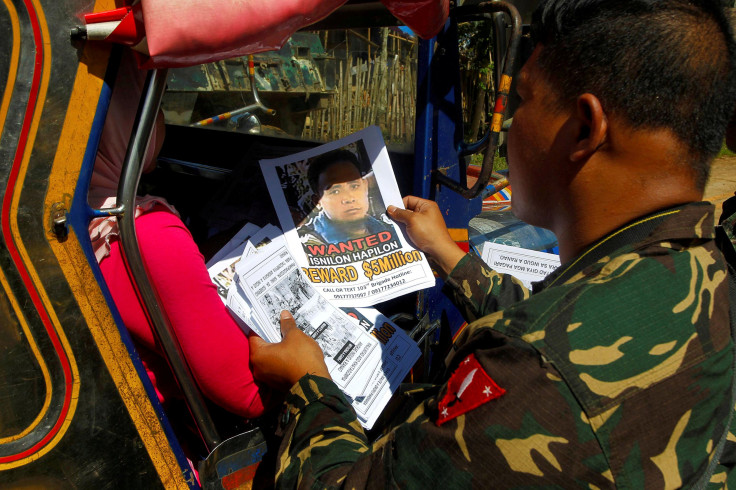Who is Isnilon Hapilon? ISIS's Southeast Asia Head Killed In Philippines

The head of the Islamic State group, also known as ISIS, in Southeast Asia, Isnilon Hapilon, has been killed in the southern city of Marawi, Philippines, reports said Monday. Hapilon was said to be on the United States Department of Justice's list of most wanted terrorists.
Hapilon, whose complete name was Isnilon Totoni Hapilon, was also known by the nom de guerre, Abu Abdullah al-Filipini. The lean and thin man with a goatee beard was born on March 18, 1966, in Lantawan in Basilan province of Philippines. Hapilon started elementary school in 1978 at the age of 10 or 12 at the Maluso Central Elementary School, and later he was enrolled at the Basilan National High School.
He joined the Moro National Liberation Front (MNLF) in 1985 and traveled between Sulu and Basilan. Being with the rebel group, he took up Arabic and madrasa education and was later appointed as the spokesperson of the Commander Barahama Sali in 1992. Later, he met Abdurajak Abubakar Janalani, the founder-leader of the Abu Sayyaf group.
The Jihadist militant group, since its inception in 1991, has been involved in activities like kidnapping for extortion, bombings, and assassinations in the Basilan province. Hapilon had been evading Philippines authorities for over a decade since early 2000 when he became to be known as a callous commander of the militant group.
On July 23, 2014, Hapilon swore an oath of loyalty to the group. Last year, he was designated by the ISIS as the terrorist organization’s emir for Southeast Asia as he headed a major faction of the Abu Sayyaf group. He was also known to be the commander of the Brigade of the Migrant based on the southern island of Mindanao and made up of fighters from Malaysia, Indonesia, and the Philippines, according to a report published Monday by CNN.
As the militant group grew extremely deadly over a period of time, its terrorist activities took a toll on the region where it was active. In 2004, the group bombed a passenger ferry in Manila Bay that killed 116 people. In another incident in 2014, Abu Sayyaf militants attacked civilians celebrating the end of Ramadan in Talipao, in Sulu province, which killed nearly 21 people, CNN reported.
Hapilon also had links to the Maute group, another rebellion group that declared allegiance to ISIS. The Maute group’s first known encounter with the military came in 2013, when it attacked a security checkpoint in Mindanao, according to the BBC.
The Federal Bureau of Investigation had offered $5 million reward for information leading to Hapilon’s arrest. It described the 51-year-old terrorist as a senior leader of the southern Philippines-based militant group.
Defence Secretary of Philippines, Delfin Lorenzana, confirmed the reports that the Philippine ground forces mounting a final assault on the militants in Marawi killed Hapilon. A DNA test would also be carried out because of the reward offer from the United States government, he added. “The implication of this development is that the Marawi incident is almost over and we may announce the termination of hostilities in a couple of days,” Lorenzana was quoted as saying in multiple reports.
© Copyright IBTimes 2024. All rights reserved.





















